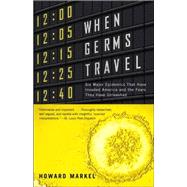
Note: Supplemental materials are not guaranteed with Rental or Used book purchases.
Purchase Benefits
What is included with this book?
| List of illustrations | |
| Author's note | |
| Acknowledgments | |
| Introduction | p. 3 |
| Facing tuberculosis | p. 13 |
| Bubonic plague visits San Francisco's Chinatown | p. 47 |
| The rabbi with trachoma : the view from Ellis Island | p. 79 |
| Lice, typhus, and riots on the Texas-Mexico border | p. 111 |
| No one's idea of a tropical paradise : Haitian immigrants and AIDS | p. 141 |
| Sounding the cholera alarm in Detroit | p. 177 |
| Epilogue : "public health is purchasable" | p. 205 |
| Notes | p. 215 |
| Index | p. 253 |
| Table of Contents provided by Blackwell. All Rights Reserved. |
The New copy of this book will include any supplemental materials advertised. Please check the title of the book to determine if it should include any access cards, study guides, lab manuals, CDs, etc.
The Used, Rental and eBook copies of this book are not guaranteed to include any supplemental materials. Typically, only the book itself is included. This is true even if the title states it includes any access cards, study guides, lab manuals, CDs, etc.
Excerpted from When Germs Travel: Six Major Epidemics That Have Invaded America and the Fears They Have Unleashed by Howard Markel
All rights reserved by the original copyright owners. Excerpts are provided for display purposes only and may not be reproduced, reprinted or distributed without the written permission of the publisher.